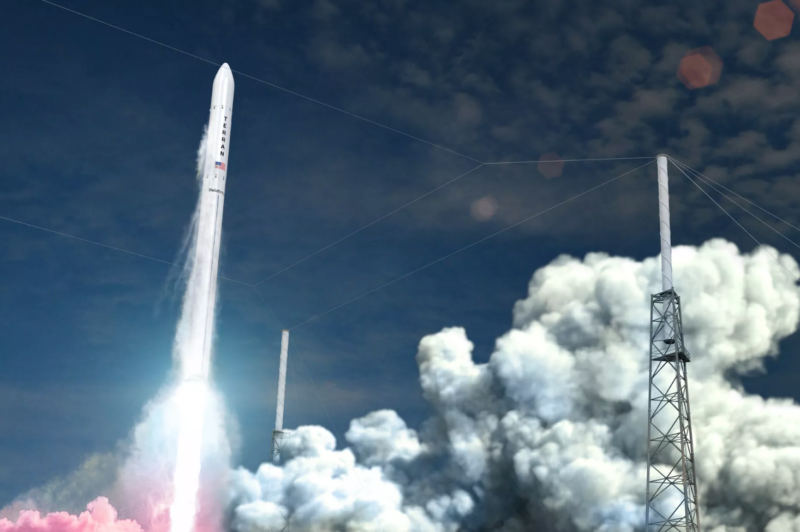TriSept Signs Deal With Relativity Space for Terran 1 Mission

Artist rendering of Relativity’s Terran 1 rocket. Photo: Relativity Space
TriSept has agreed to purchase a full mission on a future Terran 1, Relativity Space’s 3D-printed rocket in development, the companies announced Thursday. This is TriSept’s first deal with Relativity Space. The launch will take place as early as 2022 from one of Relativity’s launch sites at Cape Canaveral in Florida or Vandenberg Air Force Base in California.
Jason Armstrong, TriSept’s director of launch and integration services, told Via Satellite the launch broker and integrator is choosing to purchase a Terran 1 because it can carry a larger payload than other small lift competitors.
“The real game-changer with Relativity is the fact that it’s a somewhat larger vehicle. That gives us a more open marketplace for our commercial satellite and government satellite providers that are in the class of satellite from 300 kg to about 700 kg that are too large to take advantage of the much smaller launch vehicle platforms,” Armstrong said, adding that this is a customer niche that doesn’t have the size or funds to purchase a larger rocket like the Falcon 9.
Terran 1 is designed to carry a maximum payload of 1,250 kg to Low-Earth Orbit (LEO), and a high altitude payload of 700 kg to Sun-Synchronous Orbit (SSO). Rocket Lab’s Electron rocket, for comparison, can carry a max payload of 300 kg to LEO.
TriSept is currently in discussion with both government and commercial entities as potential customers as the primary payload, which will determine the mission requirements like launch timing and insertion orbit. TriSept plans to fill out the rest of the mission with rideshare payloads, which will bring down the overall cost for the primary payload.
Armstrong said there is no change on the integration end for working with a 3D printed rocket. He highlighted TriSept’s flight heritage of working with newer launch vehicles — TriSept manifested the only payloads successfully launched on SpaceX’s Falcon 1, and launched a mission for NASA on one of Rocket Lab’s first commercial missions.
TriSept could not disclose the financial terms of the contract at this stage but Armstrong called it “substantial” both financially and in the terms of the size of the manifest, when previous TriSept rideshare configurations have been in the 300 kg to 350 kg range.
“It’s larger in scale, but the complexity factors — all the engineering, all the adapter structure, everything that we work with today — scales to that. The complexity factors aren’t higher, or more significant, but the ability of how much we can do with the mission is significant,” Armstrong said.